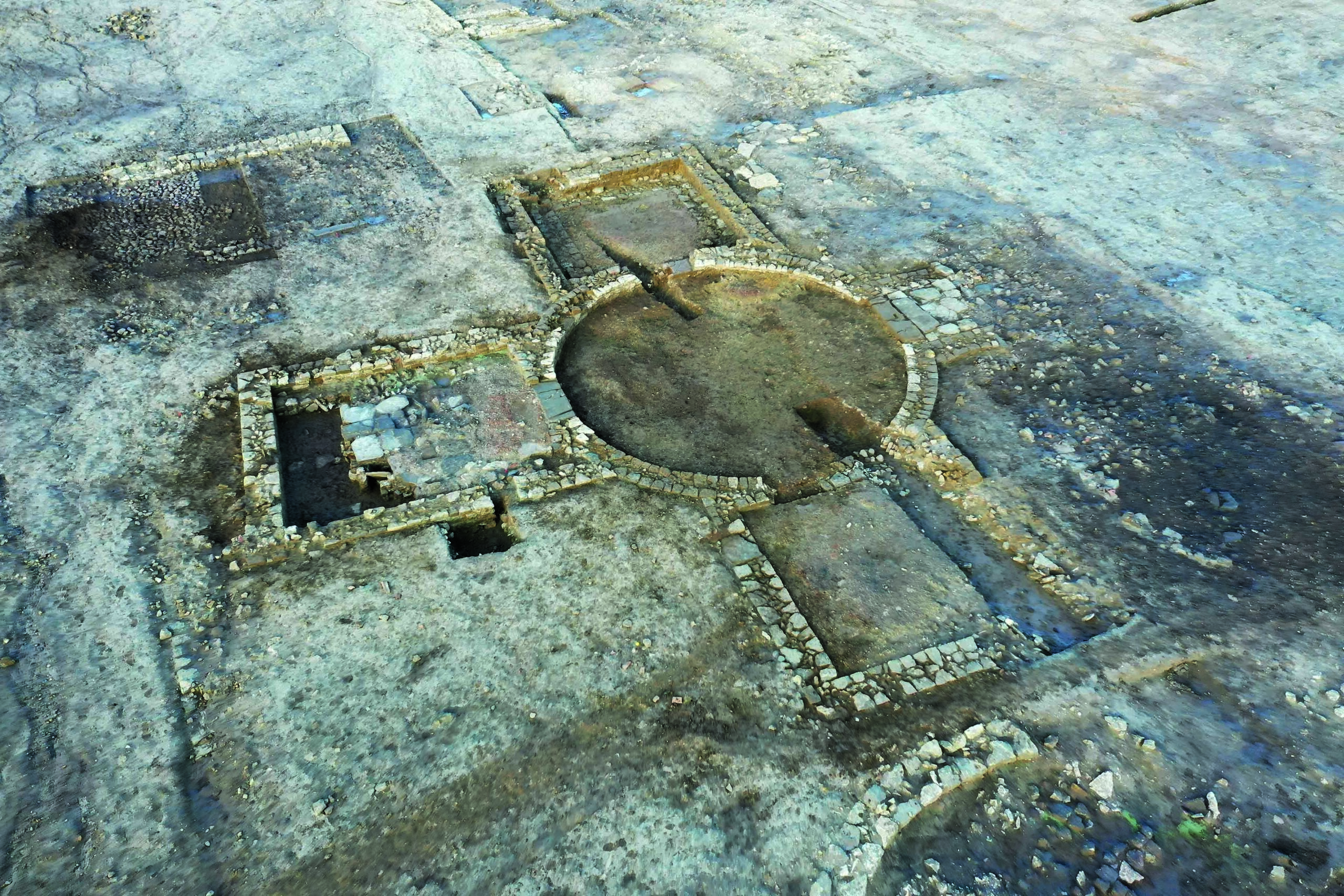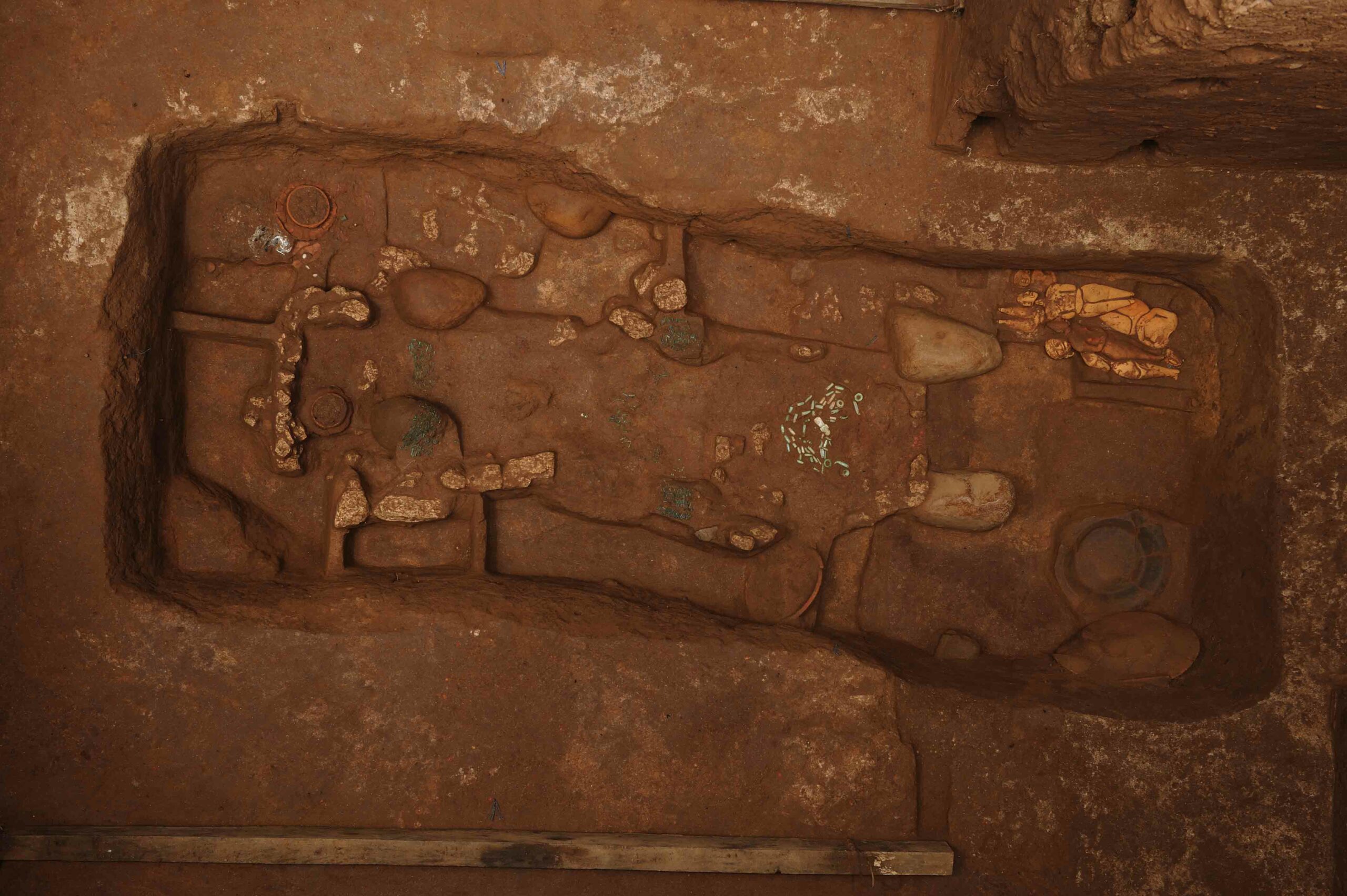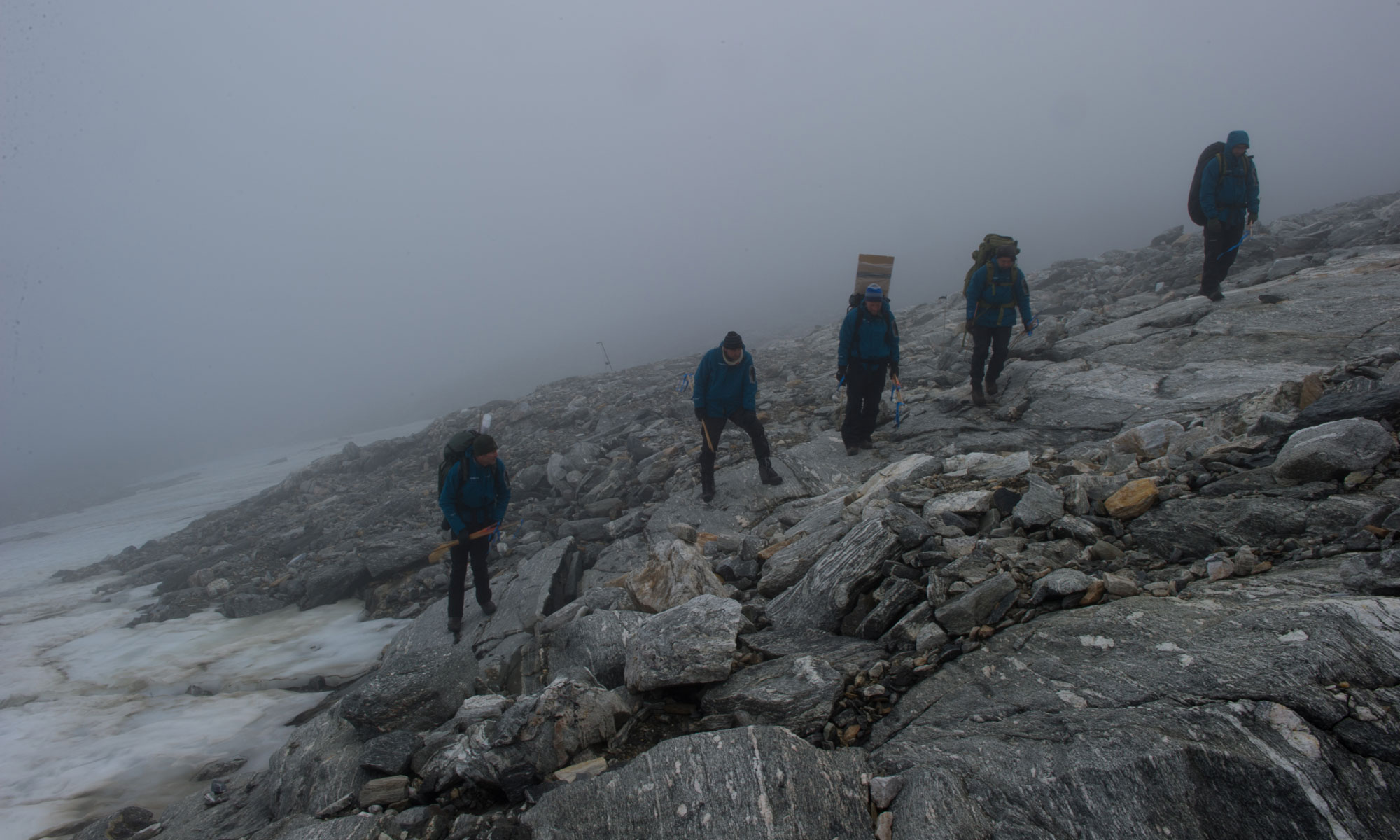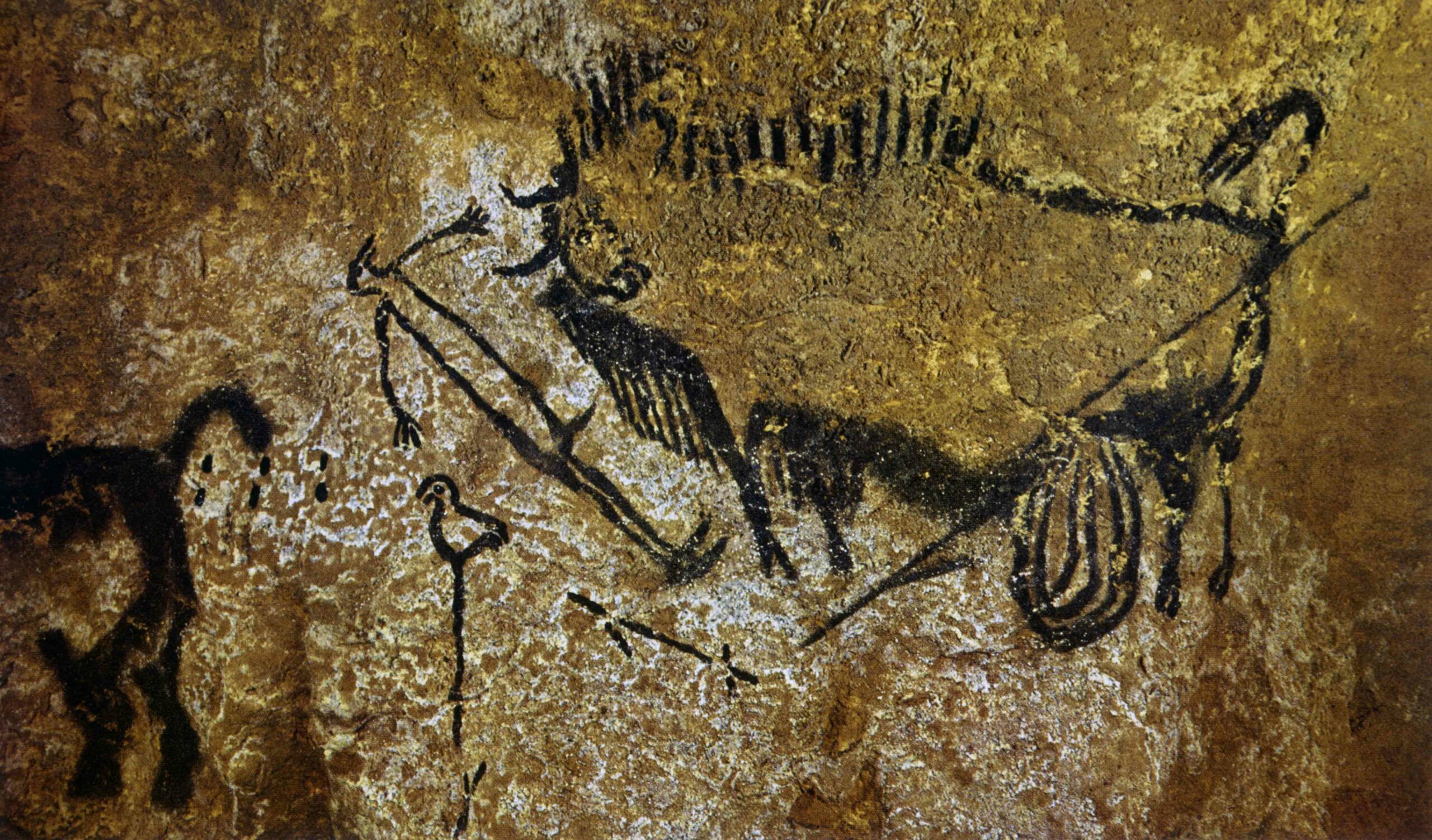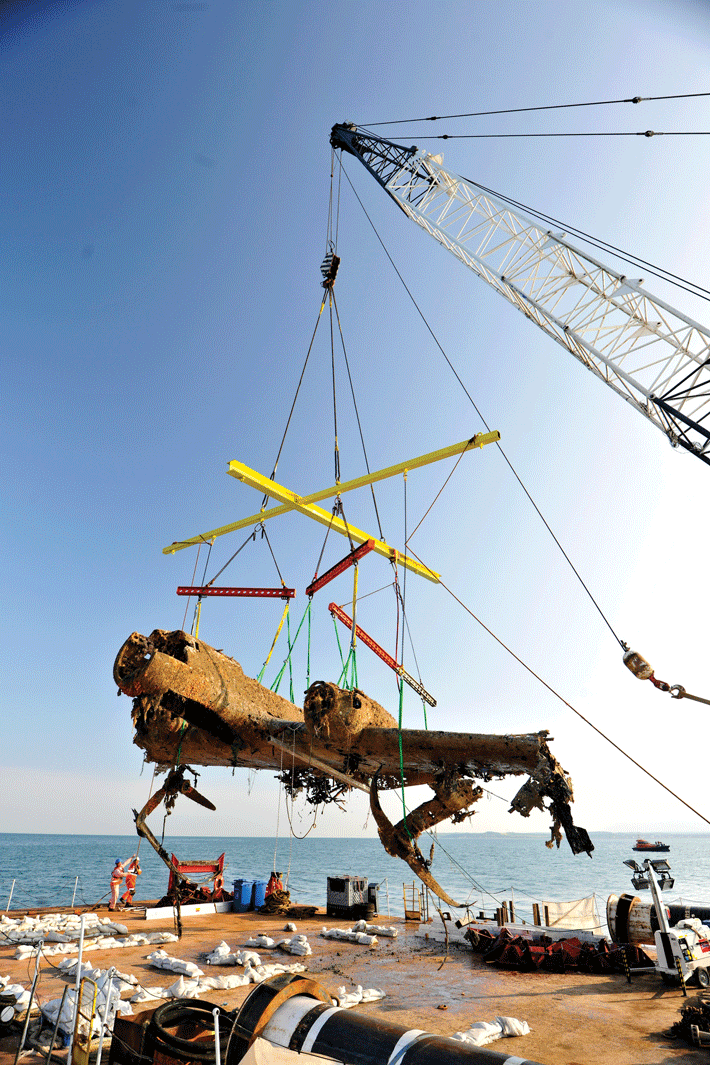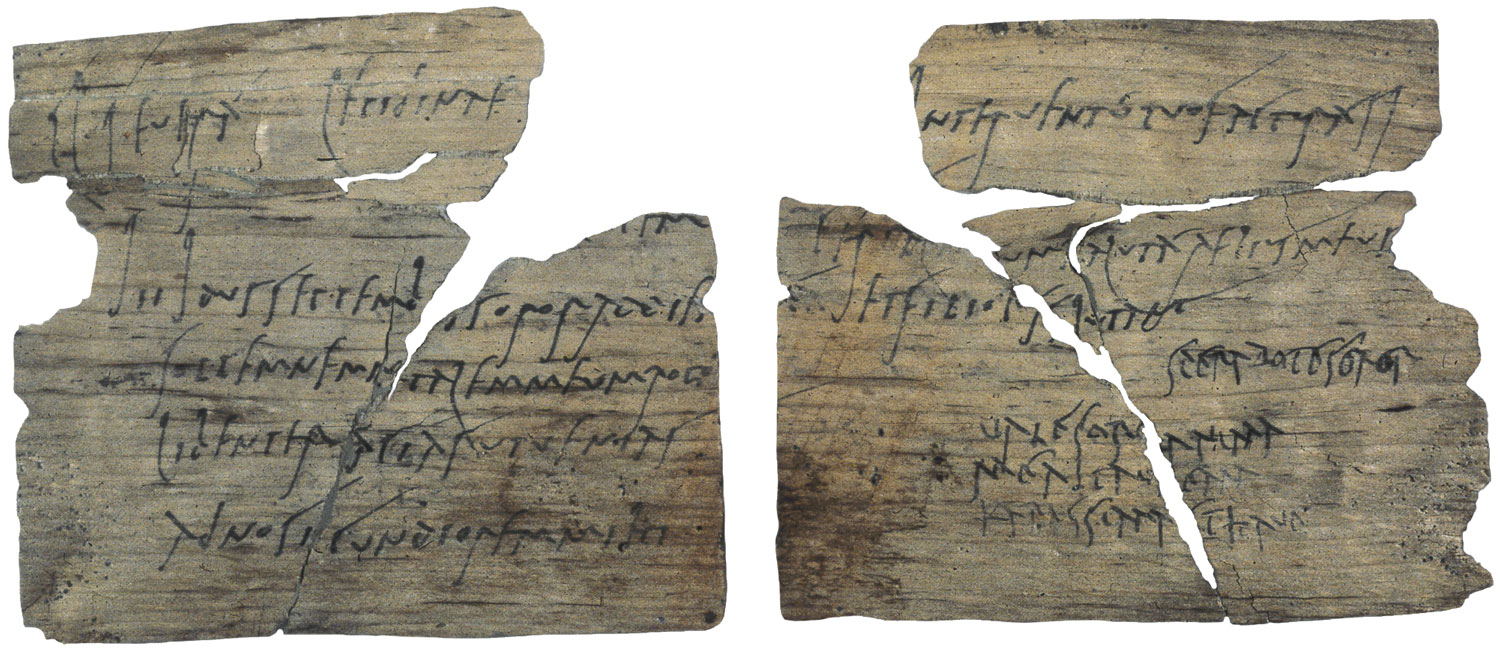
What is it?
A writing tablet
Material
Locally sourced wood and carbon ink
Culture
Roman Empire
Date
Ca. A.D. 100
Dimensions
About the size of a postcard
Found
Vindolanda Fort, Northumberland, England
On the Roman Empire’s cold and rainy northern frontier, in what is now Britain, sat the fort of Vindolanda. Beginning in 1973, excavators there began to find waterlogged tablets and fragments of tablets covered with Roman cursive writing. Once conserved and deciphered, the tablets provided rare details of the daily life and workings of the fort—lists of necessary supplies, including bacon, oysters, and honey; a letter to a soldier from home saying that more socks, sandals, and underwear have been sent; and descriptions of the native Britons the Romans came into contact with. Among the tablets—the oldest handwritten documents in Britain—survives an invitation (translated below) from the fort commander’s wife to her sister for a birthday bash:
Claudia Severa to her Lepidina, greetings. On 11 September, sister, for the day of the celebration of my birthday, I give you a warm invitation to make sure that you come to us, to make the day more enjoyable for me by your arrival, if you are present. Give my greetings to your Cerialis. My Aelius and my little son send him their greetings. I shall expect you, sister. Farewell, sister, my dearest soul, as I hope to prosper and hail. To Sulpicia Lepidina, wife of Cerialis, from Severa.
The commander Aelius’ wife, Claudia, would certainly have had someone to compose her correspondence, as evidenced by the professional hand used for most of the missive. But there is also a personal salutation written by Claudia herself (in bold above), which is the earliest known example of writing in Latin by a woman.







